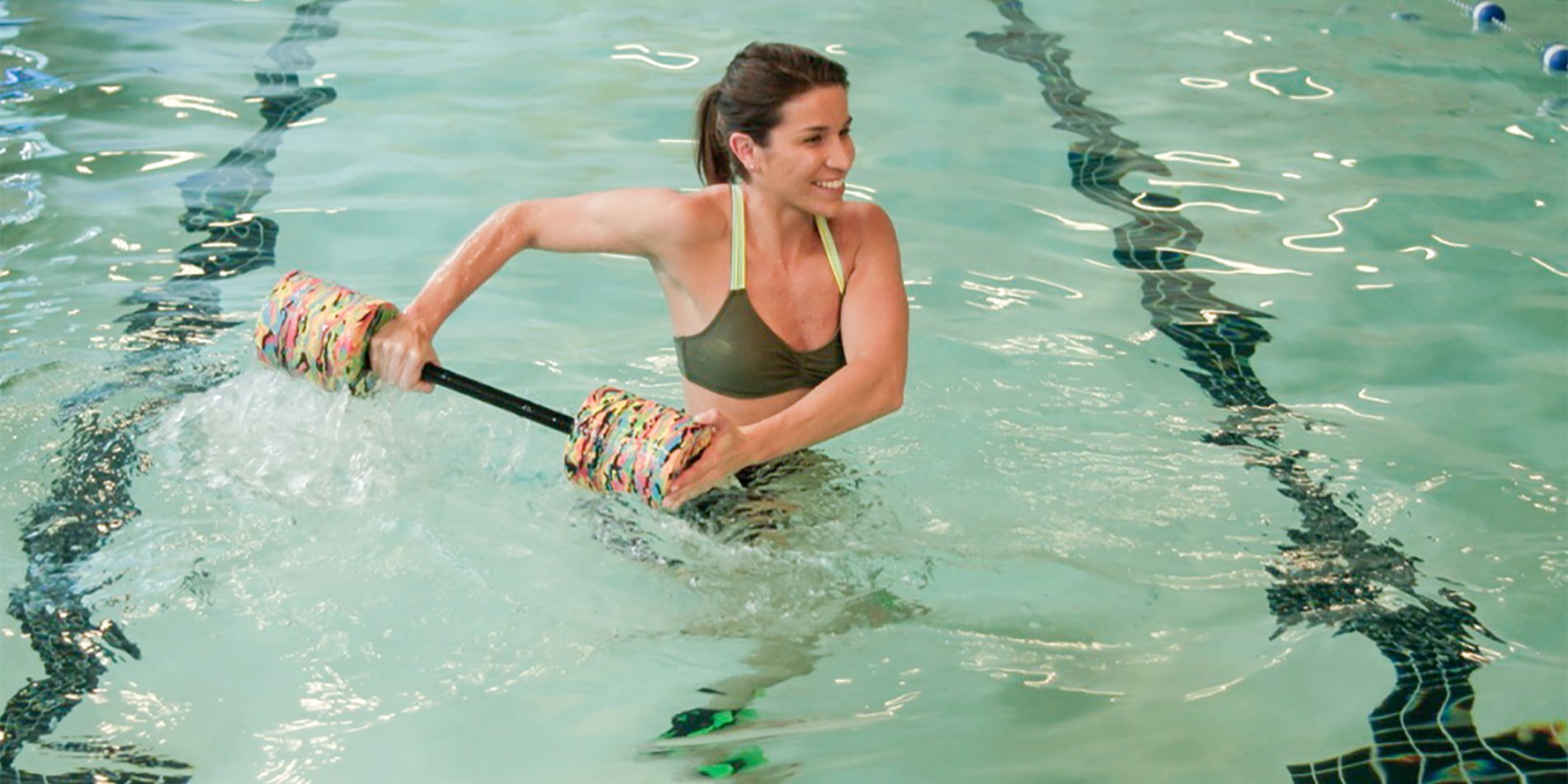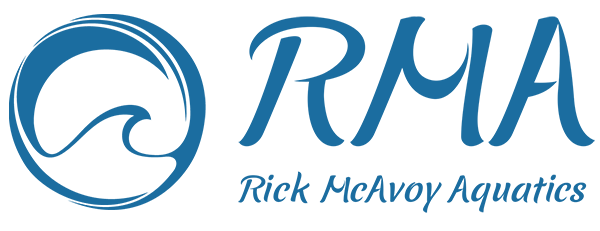
BLOG
Find Your Golf Strength in the Water
Golfers need to have muscle strength combined with flexibility for an efficient, reliable golf swing. Any weakness at any joint through any section of the motion will create a breakdown in the golf swing.
Strength training for golf is very important to help with overall performance however, certain traditional strength training techniques such as lifting weights in one plane or using traditional machines greatly limits the functional strength that is needed for an efficient, reliable golf swing. This approach eliminates the need for your body to create and maintain stabilization through a full range of motion while performing an exercise. This ability to stabilize is exactly what is needed in golf and therefore must be heavily incorporated into a golfers exercise routine.
The core muscles primary role is to provide stabilization for your spine and around the hips. Your arms and legs can only generate as much force as your core is able to stabilize. Research has shown that athletes with higher core stability have a lower risk of injury.
Using the water to improve strength and increase stabilization is very helpful.
The waters surrounding properties provide three-dimensional resistance inherently, so the muscular and neurological systems receive a more comprehensive training effect than land based training.
Water provides an accommodating resistance meaning the harder you push the water, the harder the water pushes you back. So no matter how strong or weak you are, you control the amount of resistance which is a very safe and effective way to train.
The water can help to enhance both dynamic flexibility and strength simultaneously. Having resistance in multiple directions builds balanced muscle strength and also helps reduce the risk of injury when working out.
Many golfers are not very familiar with strength training and using the water is a great option to assist with training fundamental movement patterns. Once these patterns are established then land based training and loading can occur.
Most injuries typically occur in the rotary plane.Training rotational movements in the water is much safer because there is minimal gravitational influence compared with land based training.
Training in the water can be a great cross training tool and can help you break through a training plateau.
Try getting in the water at chest level with feet shoulder width apart. Perform a basic cross country arm motion keeping a good upright posture with your core and buttocks muscle engaged and your elbows straight. Move slowly at first and then really increase your speed. Now perform for 1 minute........ Feel the difference?
By Incorporating the water into your golf training program you will be able to play longer and stronger and reduce your likelihood for injury.
Dr. Rick McAvoy, PT, DPT, CSCS has specialized in Aquatic Physical Therapy, Fitness and Sports Performance for over 30 years. Rick is the Owner Fluid Golf Training, a streaming program to help golfers reduce injury, move better and swing better.
For more information about Fluid Golf Training please visit.
Improve Golf Mobility with a Dynamic Water Warm Up
In order to complete the proper golf swing, a certain amount of muscular flexibility and joint mobility is required. If a golfer is lacking joint mobility or muscular flexibility, this will lead to increased compensation. Increased compensation leads to decreased power as well as increased risk for injury.
According to a study done by TPI (Titleist Performance Institute) of over 32,000 golfers, 50% of amateur golfers will develop a chronic issue in their lifetime. As we get older our incidence for a golf injury increases.
Warming up before golfing has been shown to decrease the incidence of golf injuries. However, most amateur golfers do not warm up properly or at all before playing.
Incorporating the water into your pre round dynamic warm up has many additional benefits that are not always possible on land.
When we are submerged in water, we move much easier. The water’s buoyancy supports your weight. When you’re submersed up to your chest the water reduces about 70 percent of your body weight, decreasing stress on your joints. Since the effects of gravity are diminished in water, you can perform mobility exercises much easier than you can on land.
Water being a surrounding medium provides the body 360 degrees of support. This helps improve your body awareness and posture which assists in improving movement and preventing injury.
The waters hydrostatic pressure helps to improve circulation and muscle relaxation preparing the tissues to move easier.
The water provides drag and viscosity forces causing an increased resistance to movement. This means the harder the harder you work, the harder the workout.
Water training will challenge your brain in a very unique way. We tend to be very patterned individuals and perform very similar movements throughout our day. When in the water both gravity and momentum are significantly reduced and your body becomes very uncoordinated. This nervous system “reset” can really help to improve your pattern on land no matter what skill level you are at.
Try getting in the water up to your chest and attempt to walk forward and backward maintaining a proper upright posture and performing an opposite arm and leg swing as in normal walking. It is going to be much tougher than you think.
Next take an old golf club in the water and try to slowly perform a few swings. How do you feel? Uncoordinated? Now go faster. Feel the difference?
By Incorporating the water into your golf training program you will be able to play longer and stronger and reduce your likelihood for injury.
Dr. Rick McAvoy, PT, DPT, CSCS has specialized in Aquatic Physical Therapy, Fitness and Sports Performance for over 30 years. Rick is the Owner Fluid Golf Training, a streaming program to help golfers reduce injury, move better and swing better.
For more information about Fluid Golf Training please visit.
Use the Water to Clean Up Your Golf Swing
Over the past 30 years practicing as a physical therapist and strength and conditioning specialist, I have worked with hundreds of injured golfers in my practice.
Golf is a one-sided rotational sport that can create significant muscle imbalance and injury.
Older golfers usually have more time to play but they often experience greater muscle imbalance, injury and pain.
In my practice I integrate water training with all my golfers because of the significant benefits water can provide.
Why should all golfers integrate the water into training?
Mobility/Flexibility Work:
In order to complete the proper golf swing, a certain amount of muscular flexibility and joint mobility is required.
The ankles, hips, thoracic spine, shoulders and wrists need adequate mobility for a fluid golf swing to occur.
If a golfer is lacking joint mobility or muscular flexibility, this will lead to increased compensation. Increased compensation leads to decreased power as well as increased risk for injury.
The waters supportive properties allow the golfer a unique training opportunity. Exercises promoting freedom of movement can be performed much easier with less pain.
Strength/StabilityWork:
Strength and stability, together with flexibility and mobility, provides the foundation for a more efficient and reliable golf swing,
Golfers need to have consistent strength throughout their entire swing.
The waters surrounding properties provide three-dimensional resistance so there is a more comprehensive training effect. Water provides an accommodating resistance, meaning the harder someone pushes the water, the harder the water pushes back. This is a very safe and effective way to train.
In addition, having resistance in multiple directions helps build balanced muscle strength to help reduce the risk of injury.
Balance Work:
An important part to the golf swing is maintaining balance throughout the entire golf swing. A balanced swing will enable the golfer to create maximum club head speed and create a more solid contact at impact.
According to TPI figures, over 60% of amateur golfers can’t balance for more than 10 seconds on one leg. This lack of balance can cause various compensations in the swing itself.
Single-leg balance exercises are important because the brain has to have an increased awareness of where the body is in space. Single leg balance exercises when performed with golfers has been shown to improve balance and that brain/body awareness called proprioception.
Water is 3-dimensional. Water provides three-dimensional resistance inherently, so the muscular and neurological systems receive a more comprehensive training effect than land.Training balance and coordination in a three-dimensional environment is both safe and effective. Golfers are more likely to attempt challenging movement patterns in the supportive water compared to land-based training because if they fall in the water they are much less likely to cause injury.
Golf Specific Work
Taking the golf swing into the water provides a much different dynamic than on land. Water provides 360 degrees of support and feedback to movement.
Water reduces the speed of movement and allows increased motor patterning producing a more proficient golf swing.
Golf is a very power driven sport. Training power in the water has been shown to be just as effective as power training on land with less muscle soreness.
The unique training effects that the water provides can help a golfer to break through a performance plateau and improve their game.
Recovery Work:
Recovery sessions in the water are a great way to get the body moving following a tough round of golf. Active recovery in the pool helps to reduce muscle soreness and rid the body of toxins created by the demands of golf.
By Incorporating the water into your golf training program you will be able to play longer and stronger and reduce your likelihood for injury.
Dr. Rick McAvoy, PT, DPT, CSCS has specialized in Aquatic Physical Therapy, Fitness and Sports Performance for over 30 years. Rick is the Owner Fluid Golf Training, a streaming training program to help golfers reduce injury, move better and swing better.
For more information about Fluid Golf training please visit.












